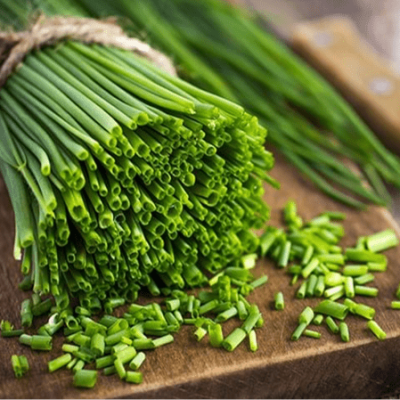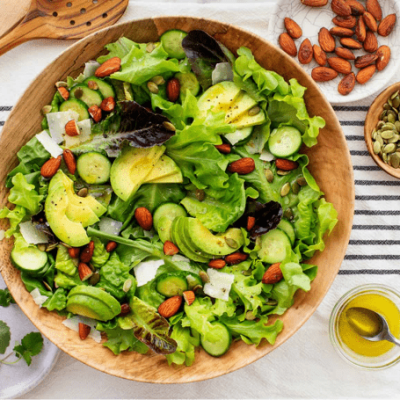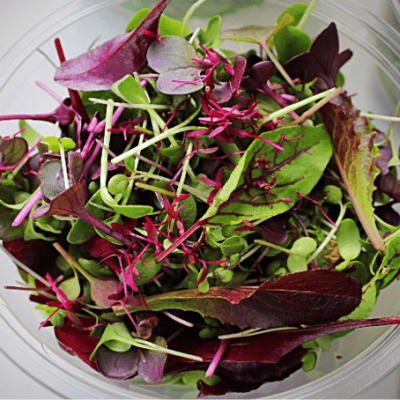living
nutrition
Greens & Microgreens




Leaves and stems have a long history of being widely consumed by humans across many cultures and regions. In our present era, greens and micro-greens are even more extensively utilized as part of our diets.
Greens and microgreens contain higher amounts of protein and essential minerals than fruits, along with low to nil sugar.




Soft leafy greens
Rocket, Mustard Greens, Cress and Soft Leafed Lettuces such as Baby Cos, Romaine and Frill Leaf along with Chives and Shallots are the heart of the Living Kitchen.
All are easy to grow, year-round, both indoors and outdoors.
Raw tender young greens are easy to digest and packed with essential, nutriments, vitamins and minerals such as calcium, copper, iron, magnesium, manganese, phosphorus, potassium, sodium, and zinc, which are all critical components that support vital health, energy and prevent disease.

Herbs & Chives
Soft, mild herbs such as parsley, cilantro and dill, along with ordinary and garlic chives, together with shallot tops, make valuable flavorful additions to salads and raw nut butters as well as cheeses.
Fresh chives are rich sources of Pyridoxine, Pantothenic Acid, Niacin, Riboflavin, and Thiamine in good proportions as well as high amounts of Vitamin A, K & C, Folate and essential minerals such as copper, iron, manganese, zinc, and calcium.
Cilantro also commonly known as coriander has anticonvulsant properties, anti-cancer, anti-inflammatory, antifungal, antibacterial as well as positive cardiac, gastric and analgesic effects.
Lutein, beta carotene, and zeaxanthin are three carotenoids in parsley that help protect our eyes and promote healthy vision. Carotenoids are pigments found in plants that have powerful antioxidant activity. Parsley is also a great natural breath freshener and teeth-whitener.




Microgreens
Used in salads, rocket, cress and mustard greens combine well with lettuce, chives and fruit such as tomato, papaya, cucumber, avocado, green beans, snow peas and mango dressings. There is need to add salt, oil or other condiments when picked right before the meal.From seed to leaf usually takes between 2-3 weeks – longer in cooler climates. Micro-greens contain 40 more times Vitamin C, E & K compared to fully grown leaves.
All these types of micro-greens are easily grown in trays in either a mix of seed-raising mix and potting mix; or planted directly into green-manured raised beds. It is important to keep micro-greens moist, however not sodden to prevent mildew and mould which are precursors of disease that will eventually kill the plants. Liquid seaweed fertilizer should be applied every 5-7days to ensure high-mineral content and rapid growth.
Microgreens can be cut with scissors or carefully ‘tipped’, leaving the plant to grow-on after the first harvest of the leaves.




The Kitchen Garden
Growing soft leafy greens in a kitchen garden can be as easy as mowing an area of lawn, laying down recycled cardboard boxes on the ground, applying a thick layer of mulch then cutting holes in the cardboard and planting seeds or seedlings. Water and the job is done. The kitchen garden is there at the back door, easy to access to harvest a constant supply of fresh lettuce, rocket, mustard greens and water cress.
The trick to growing greens is to sow often – about every 10 days to 3 weeks, pick plenty, if even not all used, chop and drop to continually top up the mulch layer.
Applying liquid seaweed fertilizer every 10 days ensures mineral-rich healthy plants.




Fruit & Greens
Those following the living foods diet and lifestyle will be aware of the food combining rules that state that fruits and vegetables should not be eaten together. For the most part, this is true. Starchy vegetables such as corn, broccoli, peas and pumpkin should not be combined with leafy greens to prevent disruption of proper digestive processes.
Greens such as soft leafy lettuces and microgreens like mustard greens and very young rocket leaf, should actually be a food group of their own. Technically, lettuce and other soft leafy greens are not vegetables. It is helpful to bear in mind that combining greens with other living foods such as fruit, aids digestion by helping to stimulate the secretion of digestive enzymes that are essential in the process of alkalizing the body.
Another important reason to add greens to a fruit meal is to help remove the acid and fruit sugar from the teeth that would otherwise cause tooth decay as well as erode the gum’s soft tissue. For these reasons greens should be eaten with, or after a fruit meal to provide the proper calcium-phosphorus balance able to return the mouth to a state of alkalinity – thus ensuring the teeth remain free from cavities and the gums healthy and strong, firmly rooting the teeth in the upper and lower jawbone.
Making a fruit-green salad can be as easy as adding seasonal chopped fruit to a bed of leafy salad greens. Fruits that combine well with soft leafy greens include, papaya, mango, tomato, capsicum, cucumber, orange, pear, grapes, figs, mulberries, apple, cherry, strawberries and banana.













